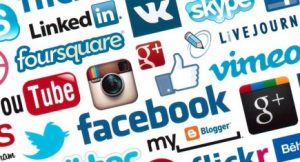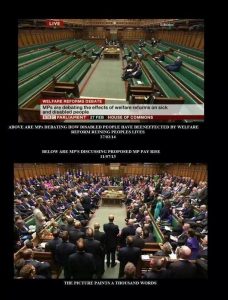
I’ve just finished watching the Top Gear Patagonia Special (and, not that it really matters with Top Gear, but if you’re still planning to watch it this will discuss the episode content and should come with a spoiler warning). The end of the second part is pretty intense – a nationalist gang in Argentina essentially forced the Top Gear film crew out of the country, and attacked them on the way out – throwing rocks at the cars and breaking windows. At one point there was apparently a gang of 300 people waiting to assault the TG crew as they came through the town.
As I thought about this, it did strike me that all of this is a pretty good illustration of the power of social media: getting a mob together like that requires a degree of organisation which I don’t think was really possible (at such short notice) before the rise of the internet.
I can imagine how easily social media / the internet allows this kind of thing to happen:
- Word gets out that Top Gear are coming to the country. If you’re on social media, chances are you’ll see the news – or one of your friends will. This includes members of the nationalist gang.
- News camera crews film the cars while they’re in the country. Someone spots that the number plate of Jeremy’s car looks like a reference to the Falklands war. Word gets out on Twitter.
- Members of the Argentinian nationalist gang – who connect via a group on Facebook – start discussing how they’re going to respond.
- On the day itself, some of the gang find the Top Gear crew and broadcast that information online. They are able to give updates in pretty much real time as events unfold.
- As the Top Gear crew leave, some of the gang follow on and update with the route.
- Meanwhile, back on Facebook, the rest of the gang are organising themselves. They come up with a plan, quickly, and share it widely to bring in as many people as possible.
The key thing seems to be the power of communication via social media: it allows a group to organise itself amazingly quickly given the latest information, and then distribute the plan widely. Although I think such a lynch mob would have been just about within the bounds of possibility in pre-internet days, it would have taken massive pre-organisation and I think would have been highly unlikely.

But there is another side to this, other than simply practical. This highlights one of the biggest dangers of social media: outrage spreads like wildfire. There is very little more powerful than outrage, especially on social media. One of the most shared photos over the last few months on social media purports to show MPs debating their pay rise (a full house) and debating welfare (an empty house) – the message clearly being “MPs don’t care about the poor or anyone else, they’re just in it for what they can get out of us.” There’s only one tiny problem with the picture: it’s a fake.
And therein lies the problem: on social media you don’t know whether something is true or false. It’s so easy for misinformation to propagate, especially when it plays into the hands of prejudice. In the case of Top Gear, when someone made the connection between Jeremy’s number plate and the Falklands war, it would have spread rapidly – most probably riding on the back of some anti-British sentiment. The MPs image probably spread so fast because many people do not trust politicians. So social media makes our prejudices easily reinforcable. We can share without fact checking. The voices which disagree don’t get a hearing – or we can simply switch off or ignore them. And, in the case of the Top Gear incident, it leads to a mob of 300 people itching to get their pound of flesh.
I wondered a little while ago whether Twitter makes us angry and dumb. I still think that there is a big problem here, which is only going to get worse as people use social media more: if we only listen to the voices which we want to listen to, we don’t hear any disagreement – does that render us incapable of intelligent thought about the subject? If we all know what the ‘right’ answer is, how do we treat someone who gives the ‘wrong’ answer? Social media makes it easy for something to become a ‘right’ answer – the dynamics of a group. There probably were those who doubted that Jeremy Clarkson’s registration plate was a reference to the war, but I doubt they were listened to and quickly came into line with the opinion of the group. And witness what happens on social media if you express the ‘wrong’ opinion about gay marriage, UKIP, or climate change (to name but three examples). Instead of intelligent debate, those with the ‘wrong’ opinions get hounded.
It seems to me there is a connection between what happened to Top Gear and the way the recent abortion debate at Oxford University was shut down.
Social Media is a tool, and – as with all tools – it can be used for good or ill. What’s the solution? I can’t think of any easy options. The problem is not with the tools themselves, but more with the people who use them. The problem lies not in social media but in the human heart. As such, the only solution I can offer is the one which we have just celebrated at Christmas: the coming of Jesus Christ, the light of the world.
This is the verdict: Light has come into the world, but people loved darkness instead of light because their deeds were evil. Everyone who does evil hates the light, and will not come into the light for fear that their deeds will be exposed. But whoever lives by the truth comes into the light, so that it may be seen plainly that what they have done has been done in the sight of God. (John 3:19-21)
The only solution to the problems with social media, ultimately, is the solution to the problem of the human heart. Unless we can do anything about that problem, any technological solution will fall short.
Postscript: The Telegraph has an article about what actually happened… count the number of social media references. Seems like my imaginary scenario isn’t too far off the mark.
Leave a Reply